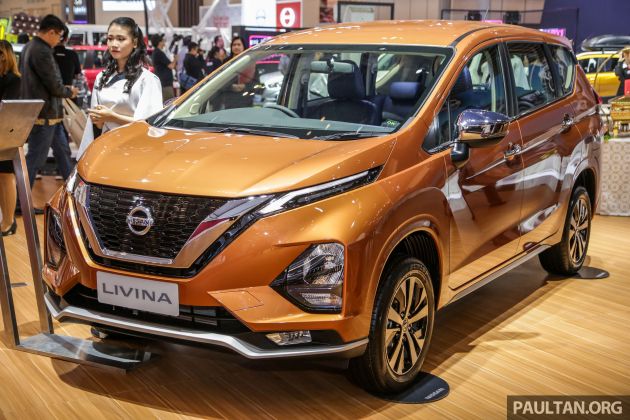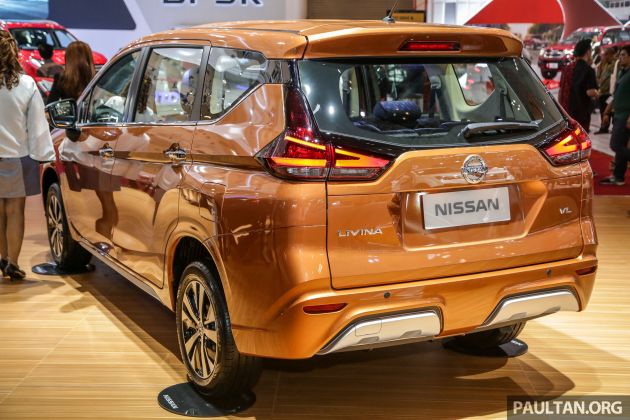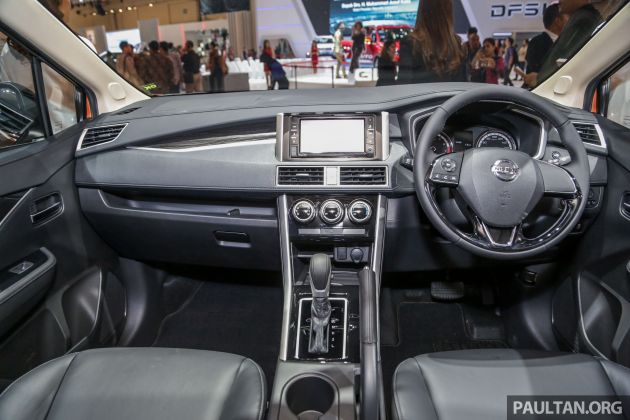The new Nissan Livina was revealed in Indonesia in February this year, and here’s our first live and close up view of the seven-seater MPV.
The latest entrant into Indonesia’s core Low MPV segment is based on the Mitsubishi Xpander, which made its debut at this motor show two years ago. Other players in this segment are the Toyota Avanza and Daihatsu Xenia twins, Honda’s Mobilio and the Suzuki Ertiga. Of course, people movers like the Honda BR-V, Toyota Rush and Daihatsu Terios are of the same stock, but with mild SUV flavours.
To those asking why is Nissan rebadging a Mitsubishi, Nissan of course holds a majority stake in Mitsubishi Motors after rescuing the latter from the brink in 2016, and both are members of the Renault-Nissan-Mitsubishi Alliance. Merging products reduce costs; furthermore, the Xpander has been a winning product for MMC in the MPV-driven auto market of Indonesia. It just makes sense, and many cents.
Most of the Mitsubishi’s sheetmetal have been carried over, but Nissan did make slight modifications to the Dynamic Shield face of its Alliance partner’s donor car.
As per the Xpander, there are slim daytime running lights sitting above big main beams in a distinctive three-tier lighting arrangement, although the LED DRL design is different, and the Mitsu’s trademark chrome strips that give it the sunken cheeks look is absent. Without this frame, the grille is bowl-shaped rather than X-shaped, conveniently morphing into Nissan’s signature “V-Motion” nose.
Also different from the Xpander is the lower bumper, which has a full-width silver lip and angular fog lamps at each end (vs round fogs on the Xpander, arranged narrowly). The contrasting front lip is visually connected to the silver side skirts.
Also, the front wheel arches of the Nissan are round instead of squared-off on the Mitsubishi. On the side, that deep wedge of a signature line is present, along with the “floating roof” look created by the small black strip joining the side and rear glass areas.
At the back, the shape of the taillamp cluster is similar, although the LED signature graphics are different – the Livina sports outward pointing boomerangs. The Nissan’s tailgate is also more simple in design compared to the Xpander, which features lines that mimic the Dynamic Shield face. Lastly, the silver diffuser of the Livina is a two-piece item. We see some T32 X-Trail in the rear – do you?
As a whole, while easily recognisable as twins, it’s easy to tell the Nissan and Mitsubishi apart. Under the skin, they’re the same. The new Livina is powered by a 1.5 litre engine with 104 PS and 141 Nm of torque at 4,000 rpm, mated to a five-speed manual or four-speed automatic. Maximum ground clearance is 205 mm on 16-inch wheels – GC is an important stat for Indonesian buyers; the higher the better.
Equipment highlights on this “trendiest tech” MPV include a seven-inch touchscreen head unit with Apple CarPlay and Android Auto, LED DRLs, 16-inch two-tone alloys, colour multi-info display with eco indicator, reverse camera, keyless entry with push start, tilt and telescopic steering and 12V power outlets for each row.
There are five variants and four trim levels in Indonesia, and the line-up reads E MT, EL MT, EL AT, VE AT and the top VL AT you see here in Nissan’s trademark Sunset Orange (five other colours are available). All models get dual airbags and ABS/EBD, with the VE and VL adding on Brake Assist, Vehicle Dynamics Control (VDC) and the above-mentioned back-up camera.
Prices range from Rp 198.8 juta (RM58,565) for the bare bones E MT (15-inch steel wheels, no rear AC blower and radio) to Rp 261.9 juta (RM77,153) for the top VL will all the equipment listed above. The Livina is made alongside the Xpander at Mitsubishi’s factory in Cikarang, West Java.
What do you think of the new Nissan Livina, compared to our Perodua Aruz? Should Edaran Tan Chong Motor make plans for the Livina if they haven’t already done so?
Source: Read Full Article





